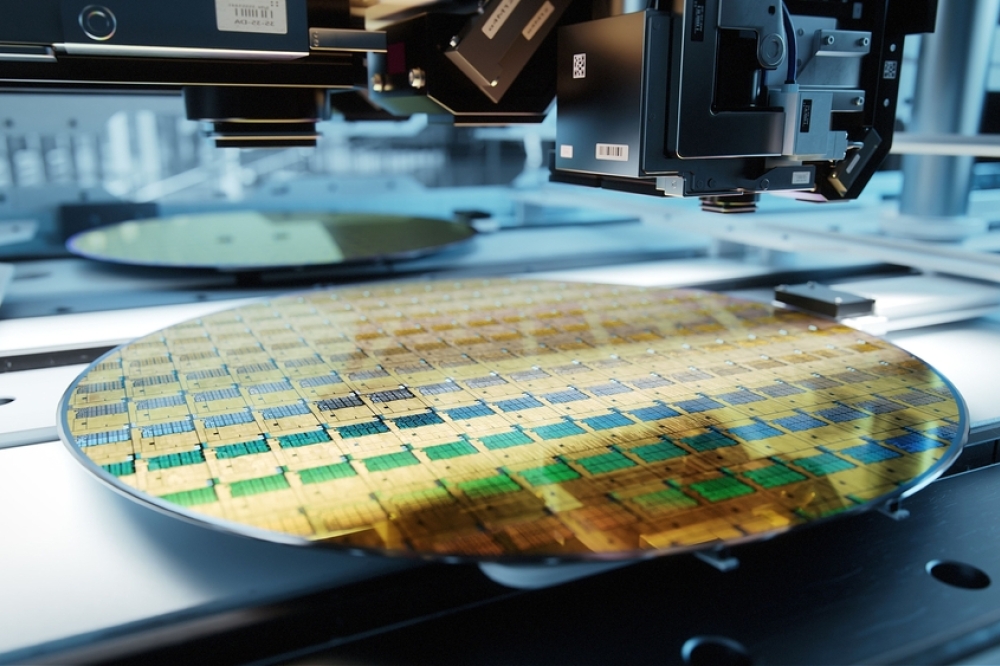All roads lead to Arizona

Arizona Commerce Authority’s President and CEO, Sandra Watson, explains
the long-term strategy that has led to Arizona becoming a premier
location for the global semiconductor industry - with a skilled talent
pipeline and ongoing supply chain development efforts, two of the key
elements that have attracted global semiconductor leaders that have
added to the state’s over 200 semiconductor companies, with more in the
pipeline.
PA: The obvious place to start would be with a little bit of background on the Arizona Commerce Authority, how long you’ve been in existence, any key milestones to date - what it is you’ve been doing?
SW: The Arizona Commerce Authority was established in 2011. It was established because of the need to diversify our economy. In 2008, with the financial collapse, Arizona was facing some very serious challenges. Our economy was built on growth in construction and the service industry and we needed to ensure that we were diversifying our economy so that, with any future recessions, Arizona would not suffer from some of the challenges that we faced in 2008.
Governor Brewer chose to bring business leaders together to determine a new course of action for the state’s economic development strategy. And as we assembled business leaders within Arizona, we also did substantial work and analysis, looking at best practices across the country. As a result, we recommended a new organization called the Arizona Commerce Authority, which required legislation, and Governor Brewer called a special session and within three days we had established the Arizona Commerce Authority and we began running full operations in July of 2011.
PA: In terms of the semiconductor industry specifically, I’m intrigued. Was there a base of semiconductor companies in Arizona which the Commerce Authority then thought, hey, this is a booming industry or a growing industry, let’s see if we can promote it more? Or did the Commerce Authority say, hey, the semiconductor industry is where it’s going to happen in the future, so let’s see if we can create an industry within the state?
SW: The Arizona Commerce Authority’s mission is very focused on creating a diversified sustainable economy in Arizona. We have had strength in the semiconductor industry, aerospace and defense and other manufacturing operations throughout the state. The one area that we really wanted to focus on is building up Arizona’s advanced manufacturing base. As we looked and evaluated the strengths that Arizona had and the opportunities in the future, we did zero in on the semiconductor industry. And there are several reasons why.
In 1950, Motorola began its operations here in Arizona, which really started to begin an opportunity for Arizona to grow not only its advanced manufacturing industry, but also start to attract suppliers to support Motorola’s operation. In 1979, Intel launched its first fab in Arizona. So, we began to develop a strong presence of the semiconductor industry here in Arizona. And with the work that Motorola was doing in our state and Intel, we started to be able to attract suppliers to support both of those companies and began to grow an industry in Arizona that was very focused on the semiconductor industry. When we created the Arizona Commerce Authority, we wanted to build on the success of the industry and look at opportunities to grow the semiconductor industry here in Arizona.
In 2013, a few years after we established the Arizona Commerce Authority, we actually began to develop relationships with many companies outside of the state, in particular TSMC. At that time, Governor Brewer and I visited Taiwan and began conversations with them, developed a strong relationship and continued that relationship up until their announcement in Arizona in May of 2020. We’ve now got over 200 direct suppliers in the semiconductor industry and thousands of other suppliers who support these industries each and every day.
Intel- Chandler’s, Arizona Ocotillo Fab
PA: And you offer various programmes for businesses – can you give us a flavour of the incentives you offer, the ways you can help businesses if they’re looking to move towards Arizona?
SW: Arizona offers a complete package when it comes to working with industry. We not only focus on Arizona’s quality of life, but our friendly business environment, our light touch on regulations, our ability to attract and grow talent and really develop a modern infrastructure. We also do have some financial programmes that support these industries. We have refundable tax credits, some other tax credits that are all focused on job creation.
So, everything we offer a company from a financial standpoint, is all performance based. We work with companies to understand what their investment is, how many jobs they’ll be creating in our state, and then we’re able to put a package together to help support their growth and ensure that Arizona and the company that is locating in Arizona is successful moving forward.
The other factor that is, I think, incredibly important to every company out there, especially today, is workforce. It’s really important for us to be working very closely with companies to ensure that we’re meeting their talent needs. And by doing a complete assessment of what those needs are, we actually work very closely with our higher ed community, our universities and community colleges to ensure that they’re producing the talent that is necessary for those companies to be successful.
Our universities are doing incredible work. They have developed strong programmes in engineering, and ASU, as an example, is considered the most innovative university in the country eight years running. And they have grown their engineering school from about 10,000 students enrolled, maybe ten years ago, to over 30,000 students enrolled in their engineering programmes today, and that continues to grow. UArizona is doing a tremendous amount also in increasing their engineering talent. We’re also working very closely with our community colleges to ensure that the employers in our state have the technicians and the operators that they need in order to continue to realise their employment opportunities. One of the really exciting programmes that we just launched in partnership with Maricopa Community Colleges and the semiconductor industry, it started with Intel, now TSMC is a part of it as well.
And Maricopa Community Colleges have been leading this effort in creating the Semiconductor Technician Quick Start programme. In the last eight months, they’ve already run 600 students through that programme. And that is intended to give potential new employees an early start, a quick start into the industry, understanding what the needs are from a semiconductor standpoint. So, there’s a lot of activity. We’re also doing a number of new things, that we’re ramping up these workforce accelerators in partnership with our community colleges and industry to ensure that we’re developing very strong centres of excellence to train potential new hires through these accelerators.
Governor Katie Hobbs was joined by the Arizona Department of
Occupational Safety and Health (ADOSH), Taiwan Semiconductor
Manufacturing Company (TSMC), and workers to sign a Voluntary Protection
Program (VPP) covering the TSMC Arizona construction project.
Currently, nearly 12,000 workers support this north Phoenix project each
day, and the VPP applies to all contractors on the site
PA: I was going to ask for semiconductors, the three S’s, which are skills, sustainability and supply chain. I think you’ve probably covered skills. So, your thoughts around sustainability and supply chain?
SW: Absolutely. Here in Arizona, we have a very robust supply chain in place to help support the semiconductor industry. But we are always looking to identify if there are gaps within the supply chain.
Our focus is to attract companies to help support those industries. We have over 200 companies that are direct suppliers to the semiconductor fabs. In addition to those 200, we also have thousands of suppliers that are helping to support not only the semiconductor industry, but many of our advanced manufacturing companies. We have mapped out our entire supply chain to really develop a very comprehensive strategy to ensure that our companies here in Arizona have the goods and services they need to continue to grow their operations.
We have worked with over two dozen new suppliers that have just landed in Arizona within the last two years. And we have several other suppliers in our pipeline that we’re currently working with. Our focus is always to work with the existing companies that are currently here in Arizona looking to see what their needs are and then either growing that opportunity here in Arizona or looking to attract those companies to ensure that we have developed a very comprehensive supply chain opportunity for these companies.
PA: And on the sustainability front, I mean we’re all aware of the climate volatility - I think in Arizona at the moment, for example, the temperature you’re experiencing record or near record. But do you have programmes as well to encourage the people that come to you within the state to take their sustainability responsibility seriously and you give them help to do so as well?
SW: Yes. Our companies in Arizona are very focused on sustainability. Many of these companies have policies in place to ensure that they’re using resources efficiently and effectively and working with the community. We have examples of companies like Intel, which has a goal of being water neutral by 2030. We have several companies in Arizona, including TSMC, who are building state of the art water reclaim facilities to ensure that they’re using water efficiently. With new technology today and with the relationships and partnerships we have throughout the state, companies are coming up with solutions to ensure that they are utilising these resources in an efficient way so that we can continue to develop a very robust economy.
PA: In terms of the fairly recent the US Chips Act, I’m just wondering, and it may be a stupid question, but have you noticed any difference, if you like, pre the act and then after it, have you noticed any (presumably) increase in activity?
SW: Well, it has greatly impacted the amount of activity that we are seeing here in Arizona - The CHIPS Act and the opportunity to partner with the federal government to ensure that resources are being utilised to develop new opportunities and create a leadership position here in the U.S. Not only from a production standpoint but really focused on both national and economic security. As we saw during the pandemic, there was a shortage of chips and it’s very important that the U.S. continues to develop chips and the production of chips to maintain a leadership position in this industry. The CHIPS Act has really been instrumental. My gratitude to Secretary Romando, the entire Chips office, the administration and the work that our senators have done and continue to do. Senator Kelly and Senator Sinema here in Arizona have been very instrumental in ensuring that not only did the CHIPS Act pass, but that also that Arizona continued to stay very focused on how we could support this industry. As a result of the CHIPS Act and the funding, Arizona began discussions to ensure that we were developing a strategy that complemented the federal programme. And quite honestly, prior to, because the CHIPS Act was negotiated over a number of years before its passage, we began having discussions with Industry.
We brought in over 50 industry players from all over the country and we established a National Semiconductor Economic Roadmap Committee to develop a national strategy that would ultimately complement and support the federal legislation. As we brought industry together, we convened meetings over the course of 18 months to really understand what the needs were from industry and how we could help support them, not just here in Arizona but around the country. And as we began to have those conversations, when we developed the idea and the strategy to bring these industry leaders together, we really wanted to make sure that this was an industry led initiative, that ultimately industry was coming together to develop its roadmap to ensure that they had what they needed.
Along with the funding from the federal government to continue to grow the semiconductor industry here in Arizona, we had strong partnership with SIA and SEMI, both national organisations who are doing incredible work supporting the industry and really leading the charge to ensure that Arizona and the U.S. maintains a leadership position in this industry. As a result of all of that work and the partnership with the national associations and several other states who got involved in this process with us, we were able to develop and publish a roadmap that was launched in December of 2022.
That roadmap centred around four key areas - supply chain, which is critical to the industry and we need to continue to develop a very robust supply chain to support the industry. Talent - critical in any expansion. And our focus around talent, is working with our educational institutions and thinking about apprenticeship programmes and on the job training and working with higher ed, but also looking at the high schools and elementary schools to ensure that we have and develop programmes that get kids excited about a career in the semiconductor industry. So, talent was obviously a strong topic of conversation and clearly a key focus of the roadmap. areas also equally important are infrastructure, ensuring that the U.S. has the infrastructure necessary to support the growth of this industry. So, infrastructure can be a term broadly used, where most people think of infrastructure as utilities and water and a whole host of other utility and infrastructure roads, but also research and development infrastructure in making sure that we have the research and development opportunities and institutions to help support the future advancements in this industry and looking at developing new innovative technologies to support the industry.
Infrastructure was broadly discussed largely in the R and D realm, but also with the other factors of infrastructure. And then the last piece, which is really critical, is entrepreneurship. And this industry, as you can imagine, because it’s so capital intensive that it is difficult for entrepreneurs to establish themselves in this industry because the costs are so high. The barriers to entry are very high. So, the strategy was to focus on entrepreneurships and helping entrepreneurs find access to some of these research facilities. Creating a strategy to help entrepreneurs both on the capital side - access to capital, but also access to equipment and tools and opportunities to work in a collaborative way with our universities or with businesses and giving them access to some of these shared facilities. These four areas - supply chain, infrastructure, talent, and entrepreneurship - were key to develop a very strong roadmap going forward to help support and complement the federal investment that is being made.
A vision to transform acres of state-owned desert into a global
technology epicenter marked a major milestone when Governor Doug Ducey
and TSMC celebrated the first piece of equipment added to one of the
most technologically advanced chip factories in the world.
PA: In terms of the fruits of this strategy, you mentioned TSMC earlier, and you said you went for a visit, and then a few years later, they arrived. Clearly, there was a lot more went on, can you just give us some outline of that journey to get them to Arizona? And are you having ongoing conversations with them as to what’s next?
SW: TSMC is a global leader in the industry. In 2013, Governor Brewer and I visited Taiwan. We had our first visit with TSMC. At that time, they did not have a project that they were considering in the U.S. And our intent there was to educate them on Arizona should they have an opportunity in the future. We visited with them, we shared Arizona’s story about the current semiconductor industry here at that time. In addition, we lett them know how our community has developed and our support for not only this industry, but for advanced manufacturing across the board.
We provided information on our business climate and our regulatory environment, both very friendly to businesses to ensure that they had a full understanding of what Arizona could offer should they consider an operation in the U.S. As we continued that conversation, we talked a lot about talent and the importance of talent to the industry and the great work that our universities are doing here to ensure our companies have the talent they need to grow. And the university talent, especially from an engineering standpoint, and the explosive growth that we have seen, especially with ASU’s continued expansion of its engineering school.
Our intent in 2013 was to share Arizona’s story and start to develop a relationship. That relationship continued over several years. In 2017, they decided to come visit Arizona. And at that time, Governor Ducey and I had an opportunity to meet with the executive team and also share additional information about Arizona, show them around and look at potential opportunities within Arizona. It was in 2020 when they made a commitment to establish their facility here. At that time, they were talking about one fab – we were excited to have them announce that in May of 2020. And then shortly thereafter, they announced fab two - for a total investment of $40 billion for both fabs and the creation of 4500 new jobs. These relationships are important, and it’s important, at least from our standpoint, to share Arizona’s story with companies so that they know what Arizona offers when they are making those decisions to establish an operation in the U.S.
PA: You’ve already mentioned the education part. In practice, Arizona State University and Applied Materials have fairly recently announced a Materials to Fab Centre. So again, were you instrumental in bringing those two together?
SW: We are so excited about the announcement that was made with Applied Materials, ASU and the ACA. It was a partnership in working together to ensure that Applied Materials had the resources they needed to establish this Materials to Fab Centre of Excellence at ASU, bringing in the latest state of the art tools to begin. Obviously, a testing centre is important to Arizona and to the country. So that as we continue to grow this industry, the research and development, especially from the new tools, is going to help grow this industry. So that partnership was an exciting opportunity for Arizona because it allowed us to continue to focus on developing our research infrastructure, and having a global leader like Applied Materials as a partner was just incredibly important. We’re excited about the relationship and the partnership and we’re certainly looking forward to the future opportunities that that partnership brings to Arizona.
PA: And I’ve also noticed that you’ve opened offices in both Korea and I think Taiwan. Was the main reason for this to do with the semiconductor or at least the tech industry?
SW: We officially opened our offices in Taiwan and in Republic of Korea just this past year. And we have been developing a global strategy for many years, obviously looking at opportunities not just within the U.S., but also globally on how to grow our base of manufacturing opportunities. Taiwan and Republic of Korea are our latest offices. We have also an office in Germany, we have an office in Israel, three offices in Mexico. We’ve been focused on an international strategy for quite some time. The relationship with the businesses in Taiwan and the government of Taiwan was an important relationship that we had established many years ago. So that relationship was underway, but it was important for us to have someone on the ground in Taiwan and in Republic of Korea.
The opportunities in working not only with TSMC, but with other businesses within Taiwan is critical to advancing our strategy here in Arizona. The business attraction piece - we call that the FDI (foreign direct investment) opportunities - is important in our overall strategy, but just as important is the trade opportunities and making sure that Arizona companies are able to develop relationships with companies in both of those countries to ensure that we are providing a supply chain opportunity as well. Trade and investment are the two key factors and components of the programme.
PA: And I am also intrigued to see that SEMICON West, which traditionally has had one home, has announced that they will alternate venues, with the 2025 event (and every other year after) coming to Phoenix, I believe?
SW: We’re incredibly excited that SEMICON West will be establishing a presence here in Arizona in 2025. We’re looking forward to partnering with them to launch their very first conference outside of California. So, again, that partnership is critical and important. And as we began to develop these strong relationships with the national associations, SEMI has been amazing to work with and a strong leader in advancing the industry here in the U.S.
Those relationships and discussions continued and we assembled a team here in Arizona led by the city of Phoenix, Visit Phoenix, a few other organisations in Phoenix, the Greater Phoenix Economic Council and the ACA, and we collectively had discussions with SEMI to see if it was possible to have an alternating conference here in Arizona. So those conversations obviously were successful. That announcement was made and we could not be more proud and grateful to SEMI for working with us and looking to Arizona as a partner in helping to grow the industry nationally. We believe that, with the robust activity happening here in Arizona, not only with the strong base of companies that we currently have to support the industry, but also the interest that we have from domestic and international companies to establish their operations or grow their operations in Arizona, we believe that having a partnership with SEMI and the conference here will help us grow the prominence of the industry nationally.
Edwards Vacuum grand opening took place in Chandler in April 2023
PA: In terms of other companies, you’ve mentioned, I think it was 200 you attracted over the years. In terms of the recent ones, are there any of those that you are particularly proud of attracting for whatever reason? Or are you just delighted every time a semiconductor company arrives?
SW: Every company that lands in Arizona is a win. We are focused on ensuring that we develop a very robust, comprehensive ecosystem to support the industry. Our focus is on working with industry to support not only the semiconductor industry, but all advanced manufacturing companies in our state. We’re seeing a tremendous amount of activity in battery and electric vehicles as well, and other advanced manufacturing sectors. But the semiconductor industry is clearly one of our most important industries, along with aerospace and defence.
We’ve got a very strong presence here as well. But the semiconductor industry, for a whole host of reasons, is critical not only to Arizona, but to national security and the economic security of the country. Every single win, large or small, is important to us. And we don’t necessarily look at a company and evaluate a preference of this larger company versus the smaller companies. We know that this value chain for the industry is so important and that we need all of the businesses together to be successful. Every single win that we have announced, we’ve been excited about, and we celebrate. And we’ve got several others in the pipeline that we hope to announce very soon.
PA: One would almost have thought with all the activity going on, it’s almost as if organic growth takes over. I’m not saying you could shut your office, but you’ve got to that critical mass where people go, well, if we need to establish a base or expand within the US, then Arizona is the obvious place to go. I’m sure you’re not complacent, but what else are you working on? You say you’ve got some deals in the pipeline, are you looking to attract more fabs? Do you think that’s important? And then you get all the supply around that. Just anything you can share as to future objectives?
SW: Absolutely. Arizona’s strategy is very intentional. We have developed a strong base of semiconductor companies here in Arizona, but we are also looking at the entire ecosystem, the entire industry, and we continue to reach out to companies and develop proposals to support the industry, so new companies coming in and helping Arizona-based businesses also grow their opportunities. We will continue to develop a very strong strategy to continue to bring new companies in, and support our existing industry. We also are ensuring that we’re developing a strong foundation for these companies along talent, infrastructure, our business climate.
We’re always looking at developing new opportunities. As an example, these workforce accelerators, we know how important talent is and the ability to attract talent and grow talent are clearly foundational for every single company we work with. And by listening to industry and understanding what their needs are, we’re able to work with our partners, universities, community colleges and other state partners who are helping to develop a strong set of programming to support these industries. These workforce accelerators are critical to ensuring that these employers have the talent we need. And most of the activity we do is very centred around the needs of industry.
We listen to what industry needs are, we work with partners within the private sector and then develop these strategies – these programmes would not be successful without the partnership of the private sector. Each of our initiatives are designed around private sector partnerships and how we can work together collaboratively to ensure that they’ve got what they need. We also have developed a task force here in Arizona to help support the semiconductor industry. We created the Semiconductor Task Force to look not only at the federal programming and the opportunities to attract those research dollars that are part of the CHIPS Act, but also to support the existing industry.
We’re always looking at ways to ensure that we’re bringing industry together, understanding what their current needs are, understanding what their future needs are, and then developing solutions to help support those industries, whether they’re state focused, federal focus or global issues. We’re having those conversations with industry.
PA: Finally, the semiconductor industry is going to be a $1 trillion industry by 2030? In terms of the challenges and opportunities, you’ve mentioned skills a few times and I think everybody in the wider It industry is aware of the problem - do you think that’s the number one challenge or are there others? And the opportunities from now until 2030, for Arizona to be a crucial part in helping the industry get to that target?
SW: Here in Arizona, we are focused on providing solutions. The shortage of talent is a global issue. And no matter where you are, whether it’s the U.S. or in another country, every company is looking at ways to help develop new programmes to upgrade skills to bring in populations that aren’t currently in the labour market, and looking at ways to create a variety of entry points for individuals who are interested in pursuing a career in the semiconductor industry. I will say that talent is probably the number one issue, but it is global. But here in Arizona, we have some solutions. And we’ve been working very closely with our industry partners, and through the great work of our universities and our community colleges and the partnerships we have with industry, we’ve been able to ramp up the engineering, as I mentioned, sort of the engineering schools, especially ASU, and their incredible growth in engineering and the great work that they continue to do. But we also have our community colleges engaged. And so in Arizona, you can attract talent to the state because it’s this wonderful place to live.
Our net immigration leads the country - there’s a lot of new talent moving in on a daily basis. And we have an infrastructure in place and we are working with all our partners to grow talent and to ensure we’re meeting the future needs. We focus on solutions to some of the challenges and we’re very excited to be working directly with industry, understanding what their challenges are and then developing a collaborative effort to support those industries.
The last thing I will mention, because supply chain clearly is important as well, and we have established a supply chain consortium. We have called out to all of our suppliers in Arizona and also those that may be considering Arizona as a location. And we’ve developed a supplier consortium so that we can begin to work with our suppliers and create the same opportunities that we are doing for the semiconductor industry and all these other industries to ensure that our suppliers have what they need to meet the needs of their customers.
JX Nippon Mining and & Metals had a groundbreaking ceremony for its facility in October 2022
































